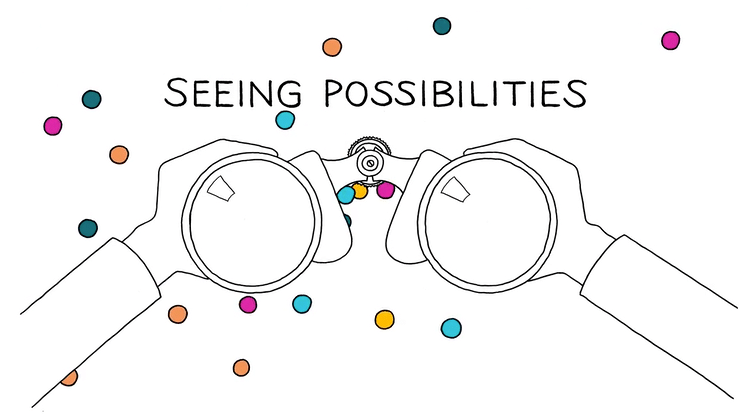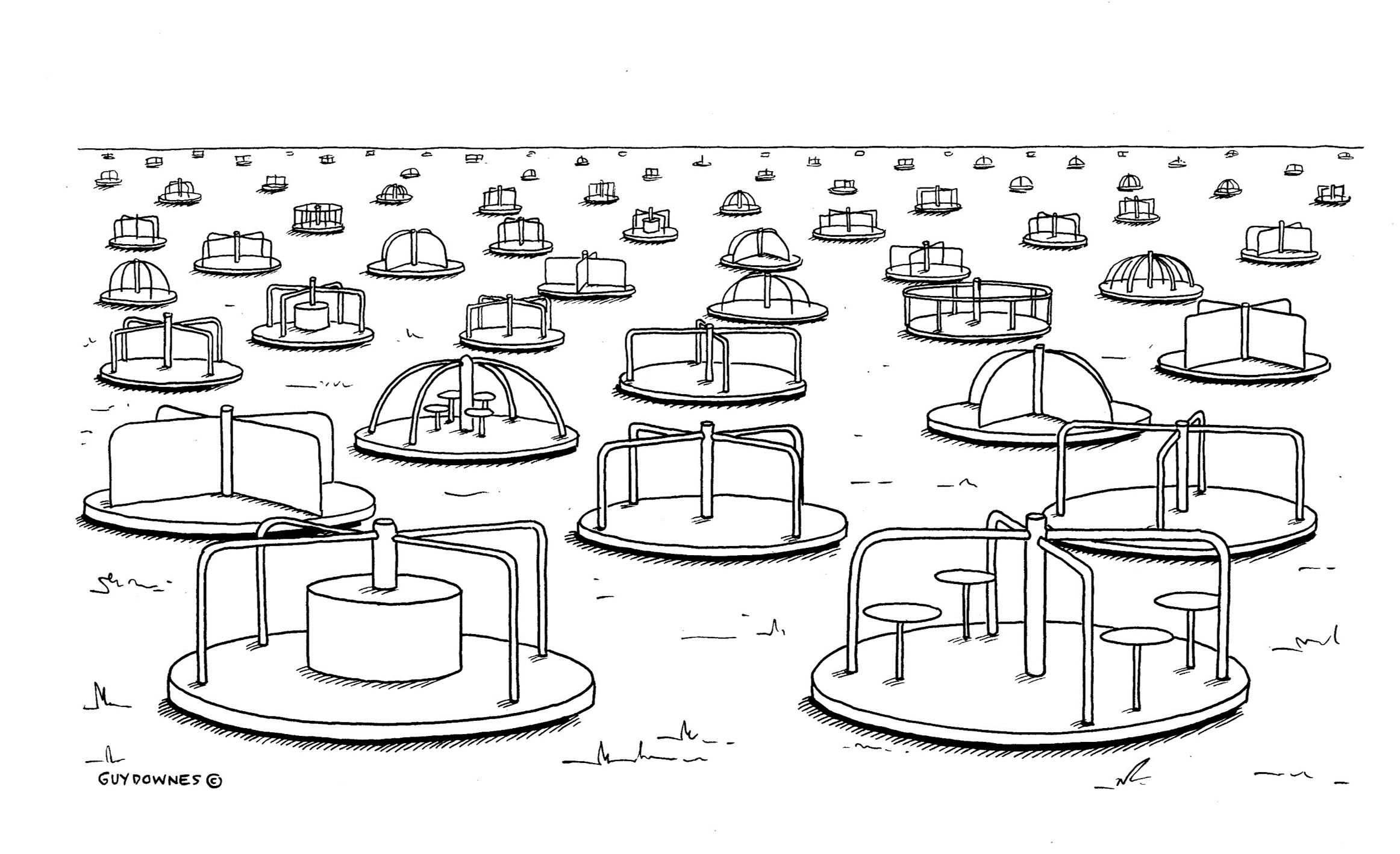Assisting a person experiencing Family and Domestic Violence
Employees can now access 10 days of paid family and domestic violence leave
Breadcrumb
- Home
- Assisting person experiencing family and domestic violence
No lawyer is an island. Nor do lawyers wear one ‘hat’ in their lives, connections and relationships. Every lawyer is part of community – dependent on others, friends to many and family to someone. If we only understand and value our responses to domestic, family and sexualised violence through the hat of our legal profession, what moments have we missed and misunderstood in our own communities?
In a talk-centred economy, victim-survivors who are silent about or silenced by violence and abuse are right alongside us in our daily living. Their suffering may be unnoticed, yet they are noticing. Noticing us. In their strategic silence, they are attuned to what and who will build on or undermine their safety and dignity… and what this means next. This article explores where victim-survivors are through the lens of ‘Seeing Possibilities’.

View the Insight Exchange animation ‘Seeing Possibilities’
As responders, are good intentions good enough?
The quality of legal responses to domestic, family and sexualised violence (DFSV) from practicing lawyers and legal firms, relies on a broader independent landscape we can’t ignore or underestimate. Australia has had a decade of ‘recognise’, ‘respond’, ‘refer’ as the backbone of how to respond to DFSV, but where has this left the people who most needed safety and our support?

“Being sent to the ‘referral merry-go-round’ can be endlessly circular, exhausting and empty.”
In Australia, 1 in 4 women (27% or 2.7 million) and 1 in 8 men (12% or 1.1 million) have experienced violence by a current or former partner since the age of 15[i].
Do victim-survivors want to be ‘recognised’ by the people and systems around them? Or do they want to select who they talk to, about what and when?
Being safe is no simple or single decision or task. Concealing experiences of domestic, family and sexualised violence (DFSV) can be a critical part of creating safety, upholding dignity and managing who (and how many people and systems) become ‘involved’.
According to the Institute of Health and Welfare (AIHW), just over half of women who experienced violence by a current partner sought advice or support. Of these women, about two-thirds sought advice or support from a friend or family member[ii].
This data reveals large proportions of victim-survivors are silent, and also reveals where many victim-survivors want to turn for support. And that ‘support’ may be us – the family and friends in victim-survivors’ day to day lives.
What if we were to re-think the whole landscape of needs and responses, contesting our assumptions about if and where victim-survivors of DFSV are talking to someone, and our assumptions about where they can, will or ‘ought to’ seek support. We can immediately consider what this data means to us as responding family and friends – how significant our response is and how we may be the preferred choice of who to talk to.
We also need to think about, and take up, what this data means for us as colleagues, workplaces and business. UN Women estimates that between 55 and 70 per cent of people experiencing domestic and family violence are in the paid workforce[iii].
The response of the workplace is important to victims of DFSV for many possible reasons including their sense of self, social connections and safety. Importantly, having an income supports economic safety, keeping more options on the table for victim-survivors considering their future.
Do victim-survivors of DFSV want to be ‘recognised’, ‘responded to’ and ‘referred on’ as employees?
There is no such place as referral island.

Responses are more than referrals.
In 2020 Insight Exchange released an ‘Insights Paper: Experiences and perceptions of workplace responses to domestic and family violence’[iv].
When victim-survivors of DFV were asked what they’d most like us to influence about workplace responses to DFV, respondents’ top three wishes are listed below.
- People in the workplace to be compassionate and nonjudgmental.
- Workplaces to provide more, or better, tangible support.
- Improved understanding and awareness of domestic and family violence.
In response to these wishes Insight Exchange developed a Guide: Uplifting Workplace responses to DFSV.[v] To assist workplaces in ‘providing more, or better tangible support’, Insight Exchange published examples of ‘support options’[vi] that a victim-survivor of DFSV may need, noting what is needed today may be different tomorrow. Whist the options are ideas not advice, and are not exclusive or exhaustive, the support options have been developed by listening to shared insights of peoples lived experience of DFSV in the four publications[vii] referenced at the end of this document.
As responding workplaces, we can and need to, uplift our communication to proactively reveal what tangible support we do offer, and be sure to offer supports without contingency on disclosure of DFSV. Widening the pathways to support, and increasing the discretion for accessing these supports, is important in ensuring that victims-survivors who are silent about, or silenced by, violence and abuse are not excluded from the very assistance they may rely on from the workplace.

“I (might) choose to use these behaviours in unseen or overt ways that are seen or unseen by others.”
To assist workplaces in understanding that the use of violence and abuse is a ‘choice’, Insight Exchange developed the short animation ‘I am I can’[viii] to invite reflection about the use of violence (in any form) being a ‘choice’. We can each choose non-violence in all relationships. When workplaces understand that the perpetration of being violence and abusive involves being ‘in control’, ‘taking control’, intensifying control’ not ‘losing control’ or being ‘out of control’, this changes what we notice, expect and challenge about the choice to perpetrate abuse.
Imagine if the scrutiny applied to victim-survivors who are seeking support, was applied instead to perpetrators misuse of workplace resources (for example work devices and paid hours) to extend their use of control and abuse. Workplaces can question if the workplace is resourcing the perpetration of abuse and close these hidden gaps of opportunity exploited by people who are perpetrating DFSV.
What do victim-survivors of DFSV need as customers of businesses?
With rare exceptions everyone is a customer or client somewhere, using these products and services as part of their day-to-day life. The prevalence of domestic, family and sexualised violence is such that no business can assume it does not have victims and perpetrators among its customer or client base. Many organisations’ offer products and services that can be manipulated or weaponised by perpetrators for their own benefit and/or to the detriment of their partner/former partner or family member.
Businesses can decide to do things differently, taking up responsibility for design and response. Lived experience insights featured in the Guide Support My Economic Safety[ix] demonstrate the significant potential for better responses, and improved design of products, services and systems to support the economic safety of victim-survivors. Importantly, strides are being made in how some businesses take up their responsibility for the design of products and services. One example by Centre for Women’s Economic Safety is ‘Designed to disrupt’[x] a series that examines how the finance sector can play a key role in preventing economic harm by adopting Safety by Design[xi] principles into the design of its product and services.
Do victim-survivors want to be ‘recognised by’, ‘responded to’ and ‘referred on’ to formal services and systems?
For many reasons, people experiencing domestic, family or sexualised violence are not always safe to (or may not choose to) use traditional statutory and specialist services when seeking support.
AIHW data indicates an estimated 82% of women who experienced current partner violence never contacted the police[xii]. Yet victim-survivors are commonly expected to ‘evidence’ experiences of violence through records of police and/or formal system involvement. This not only assumes that involvement is likely, but also assumes police/system involvement is logical, safe and unproblematic.
Current responses to DFSV vary and specialist and system responses are not innately safe by definition or duty alone. Building safety and upholding dignity is an active practice. When responding workers in these systems position themselves as ‘expert’ over and about victim-survivor’s lives, further threat and harm is likely. Evidence reflects the need for victim-survivors lived expertise to be central. The National Risk Assessment Principles for domestic and family violence[xiii] outlines seven principles. Principle 3 states that ‘A survivor’s knowledge of their own risk is central to any risk assessment.’
So how can we better understand ‘lived expertise’? Insight Exchange resource, ‘Follow My Lead’[xiv] is designed to reveal the expert perspectives of victim-survivors of domestic, family and sexualised violence (DFSV) about their own lives and what is important to them now and next.

“How you respond to me when I share with you, and in the time that follows, matters significantly to me.”
View the Follow My Lead video
In 2023, Insight Exchange released a reflection resource ‘Fear’[xv] which outlines from evidence, victim-survivors many reasons to fear. These reasons include the action and inactions of informal responders and formal responses in the service system. ‘Fear’ is typically understood to be a key measure of the likely harm the perpetrator will cause. Yet, the absence of ‘obvious’ fear, is wrongly and uncritically assumed to mean the absence of threat and risk of harm. Understanding and valuing victim-survivors’ lived expertise and their specific reasons to fear, informs and improves the quality of our responses.
Even with the best intentions our responses can be helpful, unhelpful or harmful. So, what can we do differently as informal and formal responders to change the status quo?
- We need to understand how prevalent it is to be silent about being subjected to violence and abuse, and how active and skillful and deliberate silence may be. Together we can challenge our assumptions about the safety to talk and the strategy of silence. In 2023, Insight Exchange released a reflective resource ‘Talk’[xvi] designed to reveal and value the strategic considerationsof victim-survivors when deciding if, when and how to tell someone about experiences of violence and abuse.
- We need to understand it may be the first, only or last time a victim-survivor of domestic, family and sexualised violence (DFSV) reaches out. Every response matters. There is no one preference or path for support. Every responder, community and industry matters. To avoid doing more harm, we have sometimes avoided the very invitation afforded to us from victim-survivors who are seeking our trusted support. We need to follow their lead on what is safe and useful now and next.
- Perpetrators of domestic, family and sexualised violence ‘choose’ to use violence and are afforded many ‘options’ to conceal their actions and evade responsibility. Yet victim-survivors are often judged for the ‘choices’ they make in an ecosystem of adverse ‘options’. We need to know the difference between choices and options. For victim-survivors of DFSV we need to widen the ‘options’ for safety and support, increasing their choice and control in what happens now and next. We need to challenge the ‘choices’ of people choosing to perpetrate abuse, closing social, service and system gaps that extend and conceal the use of violence and abuse (socially, at work, in products and services and through systems) Together across the ecosystem we need to eliminate excuses for choosing to use violence.
Imagine the difference it would make for victims-survivors, the silent, the silenced and those seeking support, if all workplaces, businesses, family, friends and specialist and statutory services were informed and ready to respond. Responding individuals, organisations and systems could make a meaningful difference by actively standing against the perpetration of violence and abuse, and responding to victim-survivors with safer, more dignified and discreet access to supports. Futures could be different.
‘Our responses don’t start when someone ‘tells’ us something. We have been responding all along (directly or indirectly) through our stance, our silence, our action and inaction about violence and abuse. We are responders even when nothing is told to us[xvii].
Lawyers can and do make a meaningful difference in and through our professional responses. In our lives, someone we love, live with, or lean to may be looking to us (formally or interpersonally) for discreet support and options for safety. Let’s be prepared and ready to respond. In any hat. Every time.
Authors: Anna Ross (Partner, Corrs Chambers and Westgarth and Chair, Domestic Violence Service Management (Insight Exchange)) and Sal Dennis (Director, Insight Exchange)
Insight Exchange is governed by Domestic Violence Service Management, a registered Australian charity (ABN 26 165 400 635). Insight Exchange is sustained by generous donations from individuals and a silent donor, for the benefit of many.
© 2023 Insight Exchange
Illustrations: © 2022 Guy Downes
For more information visit www.insightechange.net
References:
[i] Personal Safety Survey, Australian Bureau of Statistics (2023). In Australia, the most reliable source of data on experiences of domestic, family and sexualised violence is the Australian Bureau of Statistics Personal Safety Survey. ‘Partner’ is defined as a person who the respondent lives with or lived with, in a married or defacto relationship and excludes boyfriends, girlfriends or dates that the respondent does not and has not lived with.
[ii] Australian Institute of Health and Welfare (2019). Family, domestic and sexual violence in Australia: Continuing the national story 2019. Cat. no. FDV 3. Canberra: AIHW. Accessed via: https://www.aihw.gov.au/reports/domestic-violence/family-domestic-sexual-violence-australia-2019/contents/table-of-contents
[iii] UN Women, 2017, ‘Taking the first step: Workplace responses to domestic and family violence'.
[iv] Insight Exchange (2020). Insights Paper: Experiences and perceptions of workplace responses to domestic and family violence.
[v] Insight Exchange (2023). Guide: Uplifting workplace responses to DFSV
[vi] Insight Exchange (2023). Resource: My Support Options https://www.insightexchange.net/my-support-options/
[vii] Four publications:
Insight Exchange (2020). Insights Paper: Experiences and perceptions of workplace responses to domestic and family violence (Appendix A, B and C, open text responses). Retrieved from: https://www.insightexchange.net/wp-content/uploads/2020/02/Insights-Paper-Workplaces-and-EAPs-FINAL-web.pdf
Fitz-Gibbon, K., Pfitzner, N., McNicol, E. & Rupanagudi, H. (2021). Safe, thriving and secure: Family violence leave and workplace supports in Australia. Monash University, Victoria, Australia. DOI: 10.26180/17131691. Retrieved from: https://research.monash.edu/en/publications/safe-thriving-and-secure-family-violence-leave-and-workplace-supp
McNicol, E., Fitz-Gibbon, K. & Brewer, S. (2022). From workplace sabotage to embedded supports: Examining the impact of domestic and family violence across Australian workplaces. Monash University, Victoria, Australia. DOI: 10.26180/21268686. Retrieved from: https://bridges.monash.edu/articles/report/From_workplace_sabotage_to_embedded_supports_examining_the_impact_of_domestic_and_family_violence_across_Australian_workplaces/21268686
McFerran, L. (2011). Gendered Violence & Work: Safe at home, safe at work? Australian Domestic and Family Violence Clearinghouse, University of New South Wales: Sydney. Retrieved from: https://bridges.monash.edu/articles/report/From_workplace_sabotage_to_embedded_supports_examining_the_impact_of_domestic_and_family_violence_across_Australian_workplaces/21268686
[viii] Insight Exchange animation ‘I am I can’ (4mins) https://vimeo.com/542879965
[ix] Insight Exchange and Centre for Women’s Economic Safety (CWES) (2020) Guide: Support My Economic Safety
[x] Centre for Women’s Economic Safety (CWES) (2022)‘Designed to disrupt’
[xi] Safety by Design, eSafety Commission
https://www.esafety.gov.au/industry/safety-by-design
[xii] See ii (AIHW)
[xiii] Toivonen, C., & Backhouse, C. (2018). National Risk Assessment Principles for domestic and family violence: Quick reference guide for practitioners (ANROWS Insights 10/2018). Sydney, NSW: ANROWS
[xiv] Insight Exchange (2018). Animation and booklet ‘Follow My Lead’
[xv] Insight Exchange (2023). Booklet: ‘Fear’
[xvi] Insight Exchange (2023). Booklet: ‘Talk’
[xvii] (See xvi)

